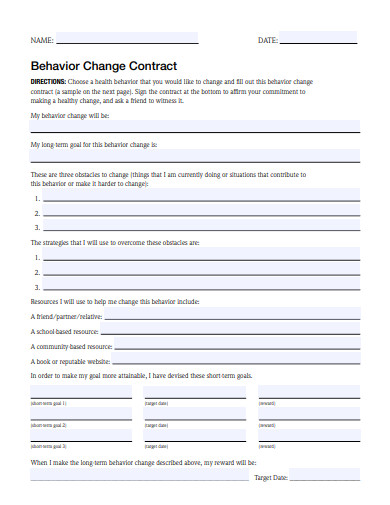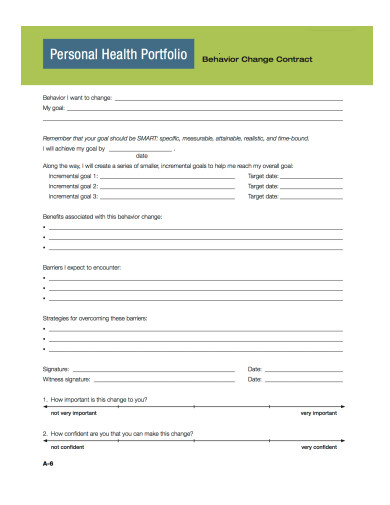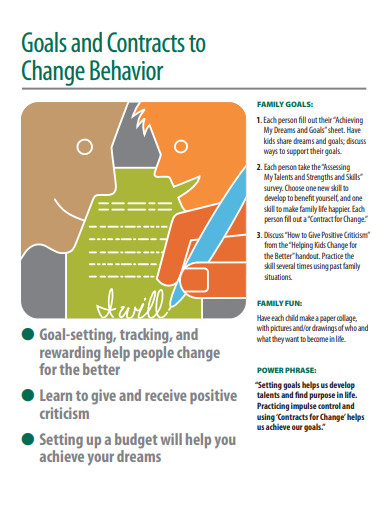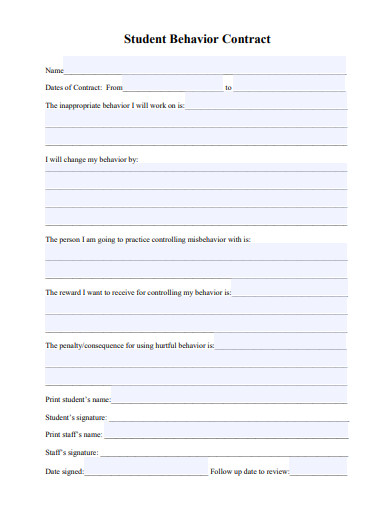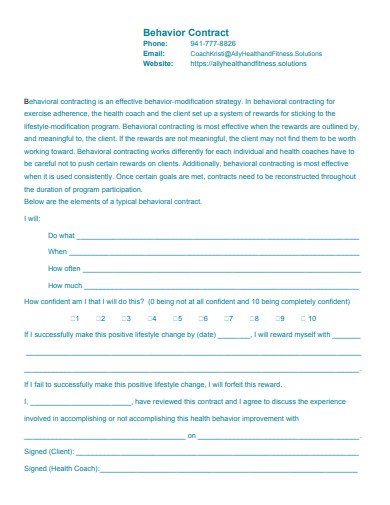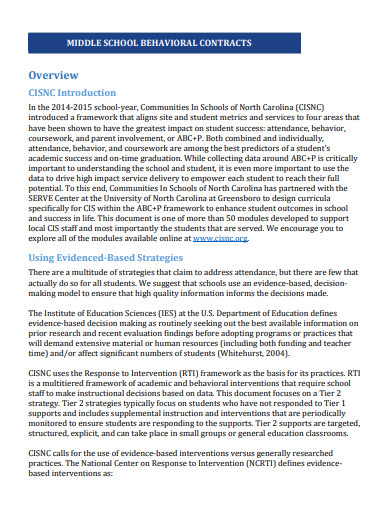If you ever noticed a student behaving badly at school whether they’re failing their subjects, uncooperative in both academic and extra-curricular activities, being hostile, or being withdrawn, or being rowdy and rude, whatever negative trait they are showing must be intervened right away before it gets worse. Teachers are responsible not only to teach their students the lessons taught in school but to also teach their students how to behave well. One way to do this is through making a behavior change contract with the student to motivate them to change their behavior. Read the article below to know how to make one.
6+ Behavior Change Contract Samples
1. Behavior Change Contract

2. Sample Behavior Change Contract
3. Health Behavior Change Contract
4. Simple Behavior Change Contract
5. Student Behavior Change Contract
6. Behavior Change Contract Example
7. School Behavior Change Contract
What is a Behavior Change Contract?
A behavior change contract is a written document made by the teacher that signifies the agreement between them and the student and the student’s parents. A behavior contract is made to address the student’s specific behavior struggles that keep them from being participative in their classes. It outlines the goals of what the student should attain such as improving their behavior and list down the intervention that will be made by the teacher and the parents to help the student to change their behavior.
How to Make a Behavior Change Contract
1. Create the Contract
When you create the contract, make sure you already have communicated with the student and their parents regarding the student’s behavior and you will have to do some necessary measures to help the student improve their behavior in school. Know the troubled student first to customize your contract according to their personality and preference. One way to do this is to interview the student regarding their personal life.
Your contract must have the following details:
2. Hold a Meeting With the Parents
When you’ve written the outline of the contract, it’s time to contact the student’s parents for the meeting. If necessary, you can also invite the guidance counselor to the meeting too. Discuss the contract with the parties involve and agree on what changes the student must be able to do to improve their behavior. Reinforce positive traits and activities so the student won’t feel betrayed or scared regarding their situation. You will also need to discuss how you will track the progress of the student and how you will enforce consequences and give rewards to the student as well. Be specific in all of these aspects.
3. Make a Follow-Up Meeting
Schedule a follow-up meeting after 6 weeks or so from your initial meeting with the student and the parents to discuss the student’s progress and make adjustments to the plan as needed. Let the student know beforehand that you plan to hold a meeting to discuss their progress.
FAQs
What are some examples of behavior changes?
Some examples of behavior change are increasing physical activity and exercise and improving the nutrition of an obese person. Reducing drinking and alcoholism of an alcoholic.
What are some common behavior change strategies?
The common behavior change strategies are tracking the progress of the changes, committing to the changes, raising awareness to oneself and others of the changes, inciting positive emotions as reactions to the changes, helping one’s relationship to others of the changes, and rewarding oneself once a change is achieved.
What are the six stages of behavioral change?
The six stages of behavioral change are contemplation, contemplation, preparation, action, and relapse.
Once you’re done writing the final version contract, make sure to review it first and check to see if any errors or wrong information are in it. Discuss the contract first with the parents and the student to make sure they allow you to create a contract in the first place and know what activities and interventions you will do for the student’s best interest. Make sure to talk to the student regarding the contract and so they will also know what is expected of them. Don’t forget to be extra patient with the student. They are struggling and they need more care and affection so do give them some patience if they don’t adjust to the contract terms right away. Soon, they will learn and change for the better. To help you get started making the contract, download our free sample templates above to use as your guide!
Related Posts
Sample Excuse Letter for School
Feature Writing Samples
FREE 10+ Security Guard Contract Samples in PDF | MS Word
FREE 10+ Option to Purchase Agreement Samples in MS Word | Apple Pages | PDF
FREE 26+ Curriculum Form Samples in MS Word | PDF
FREE 20+ Cleaning Service Proposal Samples in PDF | MS Word
FREE 29+ Sample Loan Application Form Templates in MS Word | PDF
FREE 10+ Event Venue Contract Samples in PDF | MS Word | Pages | Google Docs
FREE 10+ SBAR Samples in PDF | DOC
FREE 12+ Music Band Contract Templates in PDF | MS Word
FREE 10+ HVAC Maintenance Contract Samples in PDF | MS Word
FREE 10+ Social Media Marketing Contract Samples in MS Word | PDF
FREE 10+ Wholesale Assignment Contract Samples in PDF
FREE 18+ Financial Proposal Samples in PDF | MS Word | Google Docs | Pages
FREE 10+ Feasibility Study Samples in PDF

